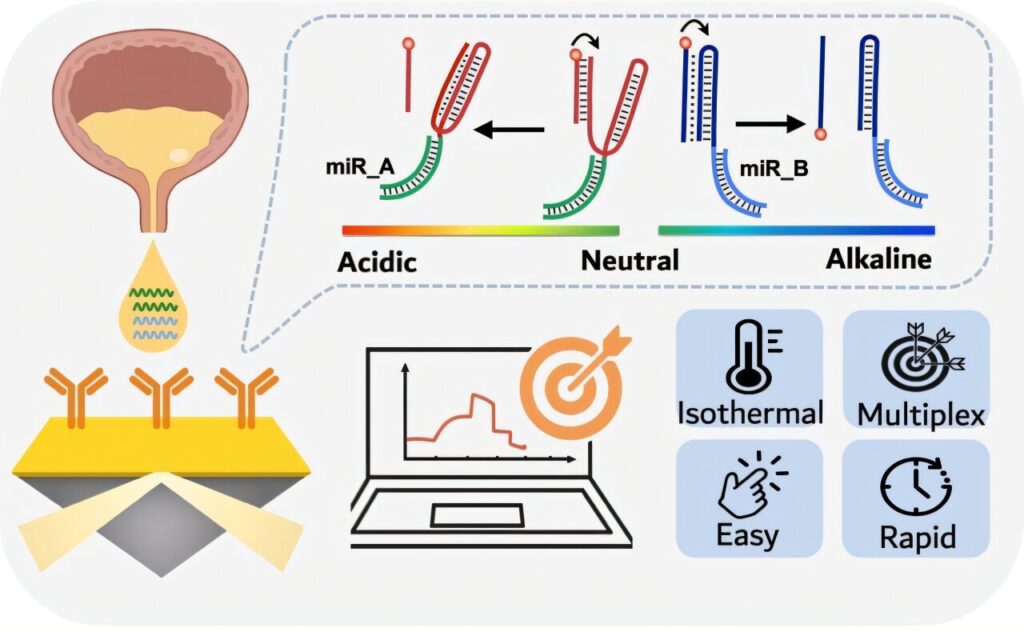A study published in ACS Nano presents a novel biosensor for the isothermal, highly sensitive detection of bladder cancer biomarkers—miRNAs, short non-coding RNAs that regulate gene expression—using programmable pH-responsive triplex DNA nanostructures.
The platform employs triplex DNA nanoswitches (TDNs) designed to respond to specific pH conditions. Two TDNs were engineered to target miR-183 and miR-155, which are overexpressed in bladder cancer.
These TDNs are integrated into a surface plasmon resonance (SPR) biosensor, enabling the sequential release of gold nanoparticle-labeled reporters at pH 5.0 and 8.3. The controlled release events generate distinct optical signals, allowing accurate target identification.
This dual-detection system demonstrated detection limits of 0.57 pM and 0.83 pM for miR-183 and miR-155, respectively, and successfully distinguished urine samples from bladder cancer patients and healthy individuals.
Unlike traditional qRT-PCR, this approach avoids complex amplification steps, operates under isothermal conditions, and reduces the assay time to less than one hour.
This assay offers high sensitivity, specificity, and flexibility, making it a robust platform for multiplex biomarker detection.
“Its straightforward design and noninvasive sampling approach make it highly promising for clinical applications—not only in bladder cancer but also in detecting other diseases linked to specific microRNA signatures,” said Prof. Ja-an Annie Ho.


